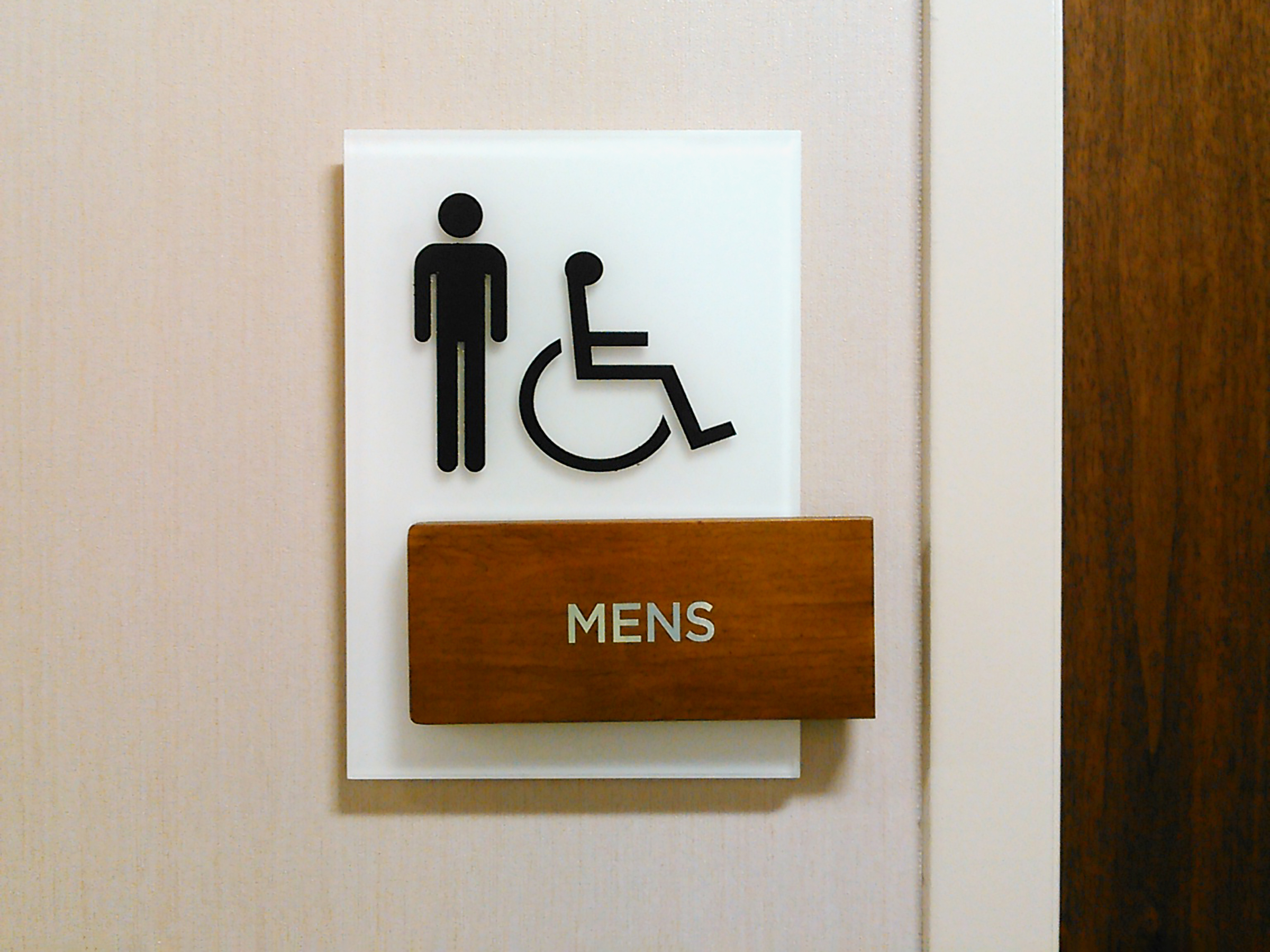ADA Signs: Essential Devices for Inclusive Environments
ADA Signs: Essential Devices for Inclusive Environments
Blog Article
Checking Out the Secret Attributes of ADA Signs for Enhanced Ease Of Access
In the realm of accessibility, ADA indicators serve as quiet yet effective allies, ensuring that rooms are accessible and inclusive for individuals with impairments. By integrating Braille and responsive elements, these indicators break obstacles for the visually damaged, while high-contrast shade schemes and understandable fonts cater to diverse aesthetic demands.
Relevance of ADA Compliance
Ensuring conformity with the Americans with Disabilities Act (ADA) is vital for cultivating inclusivity and equivalent access in public spaces and offices. The ADA, established in 1990, mandates that all public centers, employers, and transportation services suit individuals with impairments, ensuring they delight in the exact same civil liberties and possibilities as others. Compliance with ADA requirements not only fulfills legal commitments however also boosts a company's reputation by showing its commitment to variety and inclusivity.
One of the crucial elements of ADA conformity is the implementation of obtainable signage. ADA signs are developed to ensure that people with disabilities can easily navigate through spaces and structures.
Additionally, sticking to ADA policies can reduce the risk of legal consequences and potential fines. Organizations that stop working to abide by ADA guidelines might face lawsuits or penalties, which can be both economically difficult and destructive to their public picture. Hence, ADA conformity is important to cultivating an equitable setting for every person.
Braille and Tactile Aspects
The consolidation of Braille and responsive components into ADA signs embodies the concepts of accessibility and inclusivity. It is commonly positioned below the equivalent message on signs to guarantee that individuals can access the information without aesthetic help.
Responsive components expand past Braille and consist of increased symbols and personalities. These parts are created to be discernible by touch, permitting people to recognize room numbers, washrooms, departures, and various other vital locations. The ADA sets certain guidelines regarding the size, spacing, and positioning of these responsive components to optimize readability and make sure uniformity across different atmospheres.

High-Contrast Color Design
High-contrast color pattern play a critical duty in enhancing the visibility and readability of ADA signage for people with visual disabilities. These schemes are necessary as they take full advantage of the difference in light reflectance between text and background, making certain that indications are conveniently discernible, also from a range. The Americans with Disabilities Act (ADA) mandates the usage of particular color contrasts to suit those with limited vision, making it a vital facet of compliance.
The effectiveness of high-contrast colors exists in their capability to stand apart in numerous lights conditions, including poorly lit atmospheres and areas with glow. Commonly, dark message on a light history or light message on a dark history is used to attain ideal comparison. Black message on a yellow or white background provides a stark aesthetic difference that assists in fast acknowledgment and comprehension.

Legible Fonts and Text Size
When taking into consideration the style of ADA signage, the option of clear font styles and suitable text size can not be overemphasized. The Americans with Disabilities Act (ADA) mandates that typefaces have to be not italic and sans-serif, oblique, manuscript, web link very decorative, or of uncommon type.
According to ADA guidelines, the minimal text height need to be 5/8 inch, and it needs to enhance proportionally with checking out distance. Consistency in message size contributes to a cohesive aesthetic experience, assisting individuals in browsing settings efficiently.
Furthermore, spacing between lines and letters is indispensable to legibility. Sufficient spacing protects against characters from appearing crowded, improving readability. By adhering to these criteria, designers can dramatically improve availability, making certain that signage offers its designated function for all individuals, despite their visual capacities.
Efficient Positioning Methods
Strategic positioning of ADA signage is vital for taking full advantage of accessibility and making certain conformity with lawful criteria. ADA standards specify that signs ought to be installed at an elevation between 48 to 60 inches from the ground to ensure they are within the line of view for both standing and seated people.
Additionally, signs need to be put adjacent to the lock side of doors to allow easy recognition before entry. Consistency in sign placement throughout a facility improves predictability, decreasing complication and enhancing total individual experience.

Verdict
ADA signs play an essential role in promoting availability by integrating functions that address the demands of people with impairments. These elements collectively cultivate an inclusive atmosphere, emphasizing the value of ADA conformity in guaranteeing equal see it here access for all.
In the realm of accessibility, ADA indications serve as silent yet effective allies, making certain that spaces are inclusive and navigable for individuals with handicaps. The ADA, passed in 1990, mandates that all public centers, employers, and transportation solutions accommodate people with specials needs, ensuring they take pleasure in the exact same rights and opportunities as others. ADA Signs. ADA indicators are created to guarantee that individuals with disabilities can conveniently navigate through structures and rooms. ADA standards stipulate that indications ought to be placed at an elevation in between 48 to 60 inches from the ground to guarantee they are within the line of sight for both standing and seated individuals.ADA indicators play a vital duty in advertising availability by incorporating attributes that deal with the requirements of individuals with impairments
Report this page